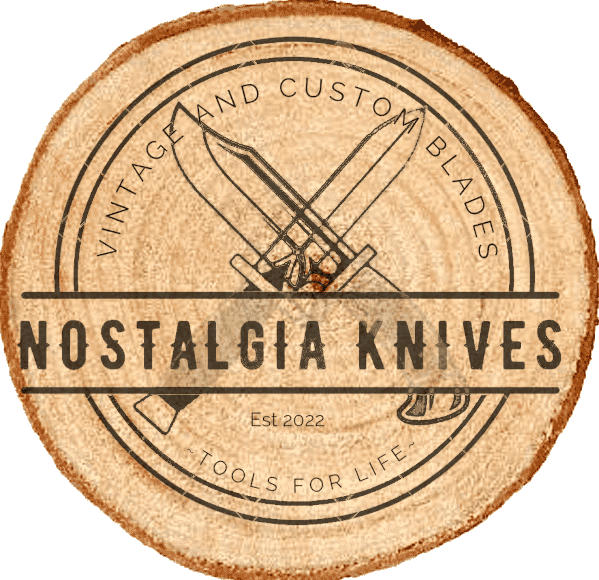In the Trenches: A Look at Military Knives Throughout History.
Posted on November 19, 2023 by congo
In the Trenches: A Look at Military Knives Throughout History.
Introduction:
Military knives have been a steadfast companion to soldiers throughout history, serving as versatile tools for survival, combat, and a myriad of other tasks. This article takes a comprehensive look at the evolution of military knives, from ancient blades wielded by warriors on ancient battlefields to the specialized tools used by modern armed forces.
Ancient Warfare: Blades of Antiquity:
In the annals of ancient warfare, knives held a pivotal role as essential multipurpose tools. Soldiers in civilizations like Rome, Greece, and Persia carried daggers and short swords as secondary weapons, crucial for close-quarter combat. These blades were not only weapons but also utility tools for daily life in military camps.
The Renaissance and the Emergence of the Dirk:
During the Renaissance, military knives underwent a transformation. The dirk, a long thrusting dagger, gained popularity among European military personnel. The dirk served both as a self-defense weapon and as a symbol of authority. Its design reflected the evolving tactics of warfare during this period.
The Age of Enlightenment: Bayonets and Combat Knives:
The advent of firearms in the 17th century led to the incorporation of blades into firearms—a defining moment in military knife history. Bayonets, attached to the muzzle of muskets, turned firearms into makeshift spears when the need arose for hand-to-hand combat. Combat knives, often issued to soldiers alongside their firearms, became essential tools for various military tasks.
World Wars and Tactical Innovation:
The 20th century brought unprecedented innovation in military knife design, particularly during the World Wars. The trench warfare of World War I emphasized the need for compact and versatile knives. Soldiers on both sides carried trench knives featuring knuckle dusters for close-quarters combat.
World War II saw the widespread adoption of iconic military knives such as the Ka-Bar used by the U.S. Marines. These knives were designed for combat, survival, and utility, showcasing a balance of form and function. Additionally, paratrooper knives with folding blades and other specialized designs were introduced to meet the demands of different military roles.
Vietnam War and Special Forces Blades:
The Vietnam War era marked a shift towards specialized knives designed for specific military roles. Special Forces units sought blades that could handle survival tasks, combat, and covert operations. The Randall Model 14, known as the “Attack” knife, gained popularity for its durability and versatility.
Modern Military Blades: Precision and Specialization:
In contemporary military operations, knives continue to play a crucial role. The development of materials such as stainless steel, titanium, and advanced polymers has led to the creation of lightweight yet durable knives. Specialized designs, including survival knives, tactical knives, and multi-functional tools, cater to the diverse needs of modern armed forces.
The multi-functionality of modern military knives extends beyond combat to include features like serrated edges, saw-back spines, and built-in tools for various applications. These knives are not only tools of warfare but also essential components of a soldier’s kit for survival, field craft, and everyday tasks.
Conclusion:
The evolution of military knives throughout history reflects the changing nature of warfare, technological advancements, and the diverse needs of soldiers on the battlefield. From the daggers of ancient warriors to the specialized tools of modern special forces, military knives have adapted to meet the challenges of their time. This journey through history highlights the enduring significance of these blades as not just weapons, but indispensable companions for those who serve in the trenches of conflict.
Category: Blade Talk, History & Legacy
Free Shipping on orders over $79.00
- - USA only
- - USPS Flat Rate
- - Not valid with other promotions
Make An Offer!
- - Button only visible to logged in users.
- - Unreasonable offers will be dismissed.
- - Submitting an offer is not a commitment to purchase.
- - Some items excluded from Make Offer feature.
Category Menu
- Under $109696 products
- Camp/Scout Knives3737 products
- Chef Knives33 products
- Collectible Knives335335 products
- True Nostalgia2323 products
- Damascus Knives3434 products
- Everyday Carry[EDC]427427 products
- Fixed-Blade5454 products
- Folding-Blade440440 products
- Straight-Razor11 product
- Pocket Knives397397 products
- Hunting Knives7878 products
- Money Clip Knives22 products
- Multi-Tool Knives4848 products
- Novelty Knives3737 products
- The Barrel33 products
- By Manufacturer388388 products
- Amica11 product
- Anvil Brand44 products
- AutoPoint22 products
- Bear MGC11 product
- Bear & Son Cutlery11 product
- Böker1212 products
- Böker Solingen66 products
- Boker USA33 products
- Boker Plus22 products
- Browning Knives22 products
- Buck knives22 products
- Buck Creek11 product
- CamCo33 products
- Camillus Cutlery2727 products
- Case XX™2626 products
- Cattaraugus Cutlery Co.33 products
- Cherokee11 product
- Clauss Cutlery11 product
- Colonial Knives1818 products
- Coyote Prov. USA11 product
- Ranger11 product
- Columbia River11 product
- Comanche11 product
- Craftsman55 products
- Crowing Rooster11 product
- Cuda11 product
- Custom/Handmade3232 products
- CutCo11 product
- E.C. Simmons Cutlery Co.11 product
- Elk Ridge11 product
- ESEE11 product
- F.A. Bower Imp. Co.11 product
- Federal Knife Co.33 products
- Johnston USA11 product
- Frost Cutlery1515 products
- White Tail11 product
- Steel Warrior55 products
- Frost Family11 product
- G.C. & CO Mora, Sweden11 product
- Gerber44 products
- Gerson Co. Boston11 product
- Hammer Brand66 products
- Hen & Rooster™1010 products
- HIT USA11 product
- Imperial3333 products
- iPak11 product
- IXL George Wostenholm11 product
- J.B Rand & Co.11 product
- John Primble11 product
- Johnson Western Works11 product
- Ka-Bar22 products
- Keen Kutter11 product
- Kent22 products
- Kentucky Cutlery44 products
- Eagle Edge44 products
- Kissing Crane11 product
- Klein Tools Inc.44 products
- Lark33 products
- Latama11 product
- New York Knife Co.22 products
- Old Forge Knives11 product
- Other Knives22 products
- Owl Head22 products
- PAL Cutlery Co.11 product
- Parker Cutlery Co.11 product
- PIC11 product
- Providence Cutlery66 products
- Puma33 products
- Queen Cutlery Co.11 product
- Remington22 products
- Ridge Runner11 product
- RILL Simple Tools11 product
- Rite Edge11 product
- Robeson Cutlery33 products
- Rough Rider33 products
- Royal Brand Cutlery11 product
- Sabre22 products
- Schrade3232 products
- Old Timer1717 products
- Uncle Henry66 products
- Sears55 products
- Seki22 products
- Sharp33 products
- Sheffield Knives55 products
- Simonds11 product
- SOG22 products
- Solingen Knives11 product
- Syracuse USA11 product
- Clover Brand11 product
- The Ideal1919 products
- Thornton USA11 product
- Ulster77 products
- Unknown/Misc.4343 products
- Utica Cutlery Company99 products
- Kutmaster99 products
- Valley Forge - Newark, NJ11 product
- Victorinox1010 products
- Wenger33 products
- Western22 products
- Winchester11 product
- Zippo55 products
EXCELLENT rating
Based on 1 reviews

By using this site you're accepting
our Online Sales Disclaimer
*Must Be 18 years or older to purchase*
Buyers Are Responsible For Knowledge Of And Adherence To Their Country, State and Local Knife Laws.
CA PROP 65 ⚠WARNING: Cancer and Reproductive Harm - www.P65Warnings.ca.gov
Copyright © 2025 · All Rights Reserved · NostalgiaKnives.com
Theme: Natural Lite by Organic Themes
